The flea, tick, and heartworm products market have witnessed substantial growth, set to reach $3.24 billion in 2024, showcasing a compound annual growth rate (CAGR) of 11.5%.
This surge follows the market’s expansion from $2.9 billion in 2023. The trajectory indicates a sustained upward trend, with the market projected to hit $4.97 billion by 2028, maintaining a CAGR of 11.3%.
The historic and anticipated growth is attributed to several factors, including the surge in pet ownership, heightened awareness of pet health, and advancements in veterinary medicine. Looking forward, the market is expected to benefit from increased veterinary expenditure, global growth in the pet population, the booming e-commerce sector, and the impact of climate change.
Pet Adoption Boosts Market Growth
The growing trend of pet adoption is poised to be a significant driver for the flea, tick, and heartworm products market. An increasing number of young individuals consider pets as integral family members, adopting them for their companionship, loyalty, and as a means to combat loneliness. The rise in pet adoption is expected to necessitate more clinical care and medications, thereby propelling the demand for flea, tick, and heartworm products.
According to a report by Petskeen, an online pet guide platform, nearly 4.1 million animals in shelters are adopted every year, highlighting the substantial potential for market growth as pet adoption rates increase.
Combatting Zoonotic Diseases Spurs Market Demand
The surge in zoonotic diseases, which can be transmitted between animals and humans, is a critical factor propelling the demand for flea, tick, and heartworm products. These products play a crucial role in preventing zoonotic diseases, safeguarding both animals and humans from potential transmission.
Recent data from the European Food Safety Authority reveals an increase in zoonotic diseases in Europe, emphasizing the importance of preventive measures. The flea, tick, and heartworm products act as a frontline defence against diseases that can be transmitted from pets to humans or vice versa.
A notable trend in the market is the emphasis on product innovation by major companies. Significant advancements in technology and research and development are driving the introduction of new and improved flea, tick, and heartworm products. For instance, Virbac, a US-based company, introduced IVERRHART MAX in August 2022. This product, containing ivermectin, pyrantel pamoate, and praziquantel, boasts a 96% acceptance rate and offers prevention against heartworm illness while effectively treating roundworms, hookworms, and tapeworms.
Focus on Natural Products for Competitive Edge
Major companies in the market are prioritizing the development of natural products, seeking a competitive edge by offering safer alternatives for pet well-being. In July 2022, Pet Wellness Direct, a US-based manufacturer, launched Protect, a new line of flea shampoo for dogs. The natural components of the shampoo, including cedar oil, rosemary oil, lemongrass oil, coconut oil, and aloe, provide a safer option for regular use on dogs, contributing to flea prevention.
The market’s evolution towards natural products aligns with the growing demand for pet health solutions that prioritize safety and effectiveness. This strategic shift allows companies to cater to the increasing consumer preference for natural and holistic approaches to pet care.








